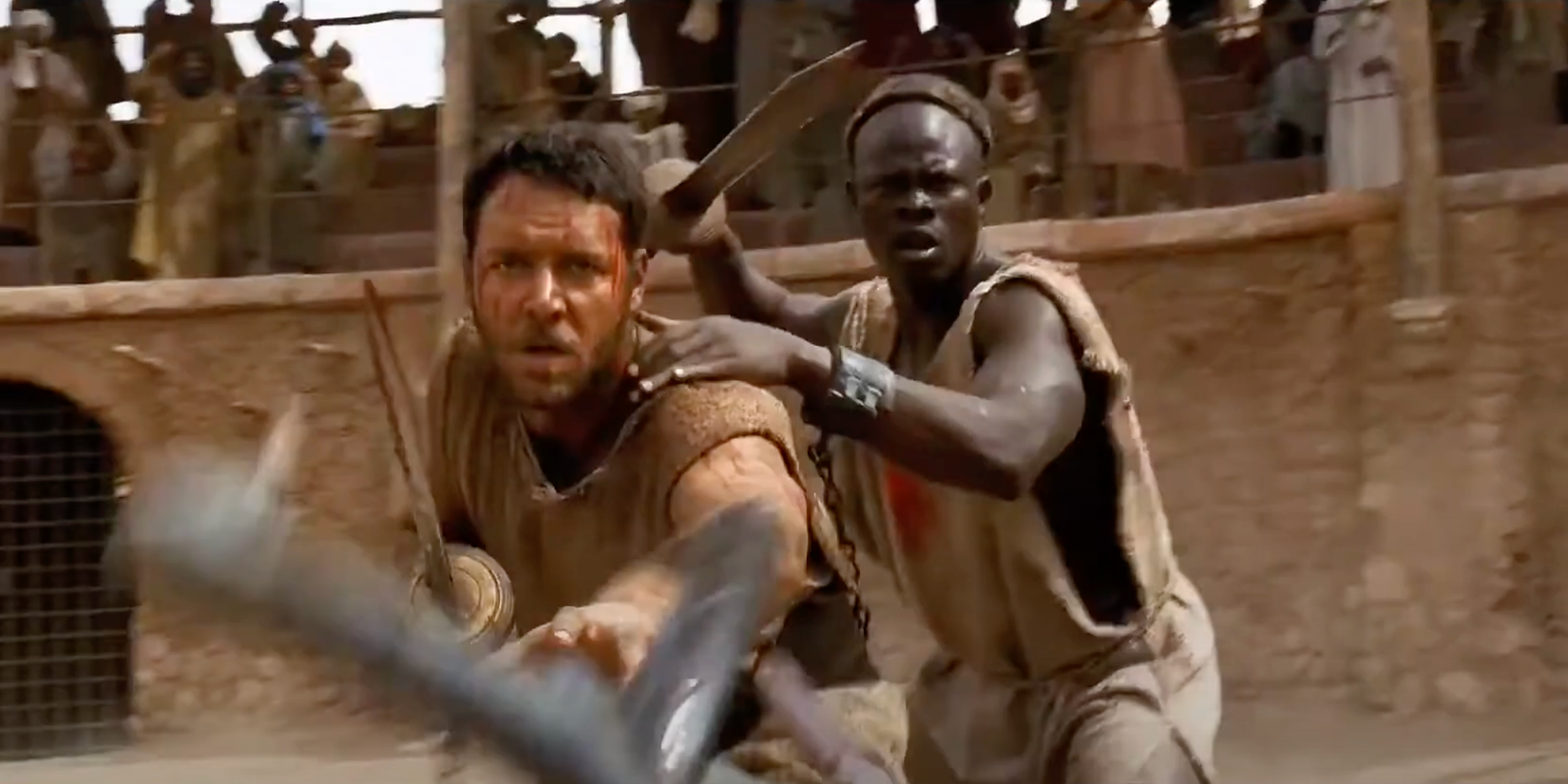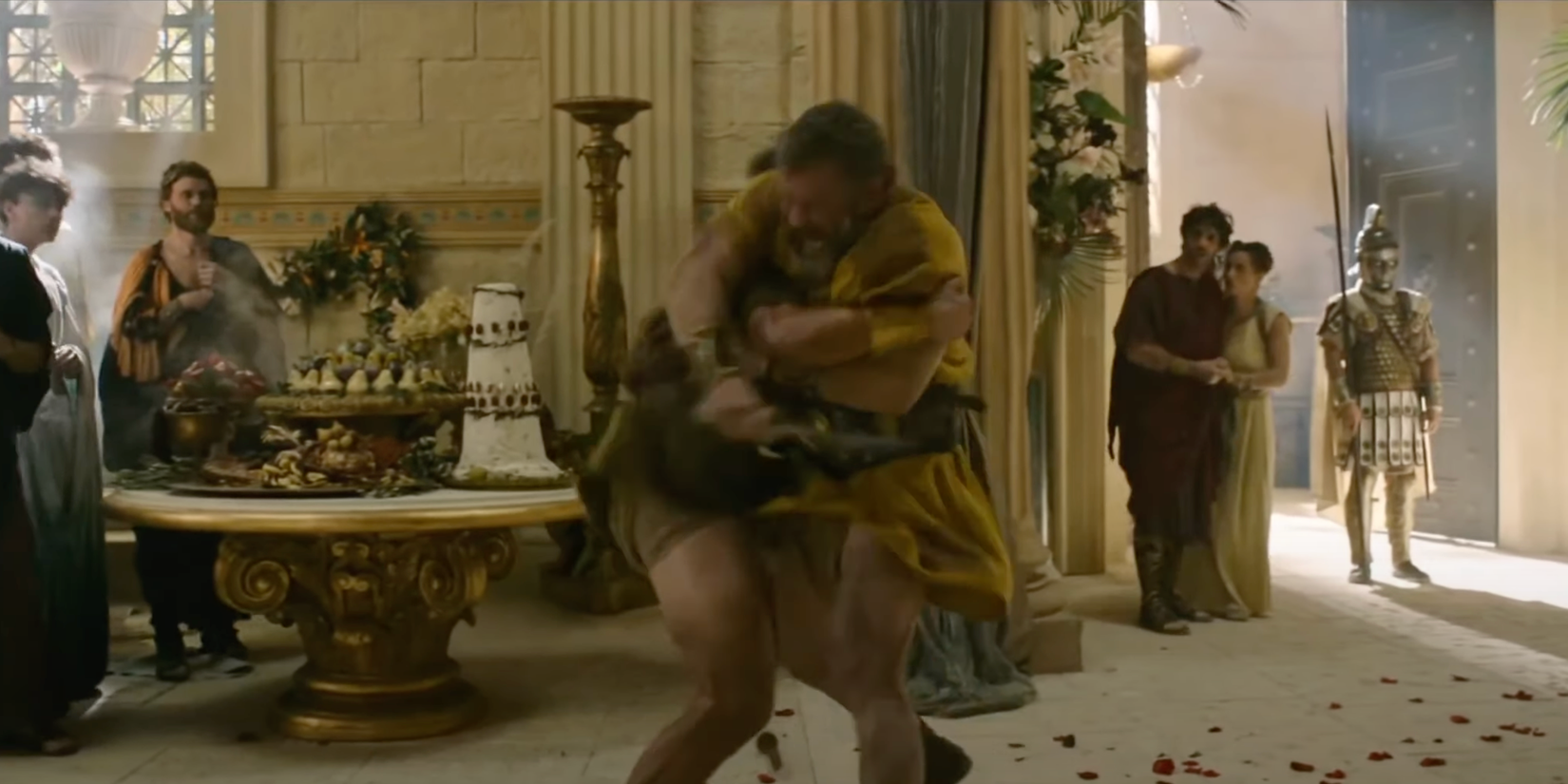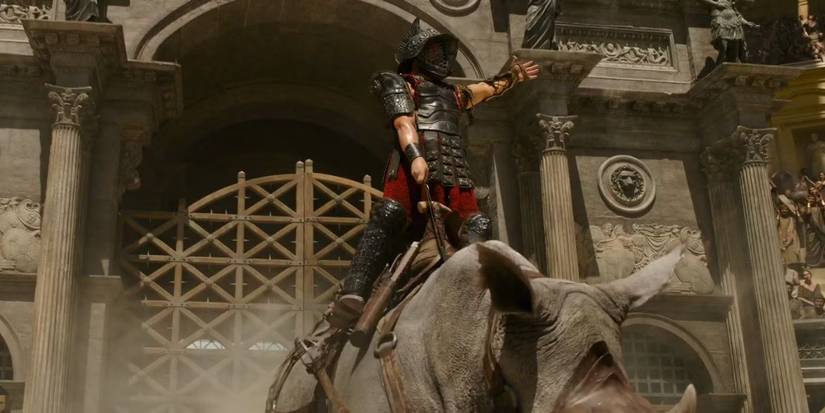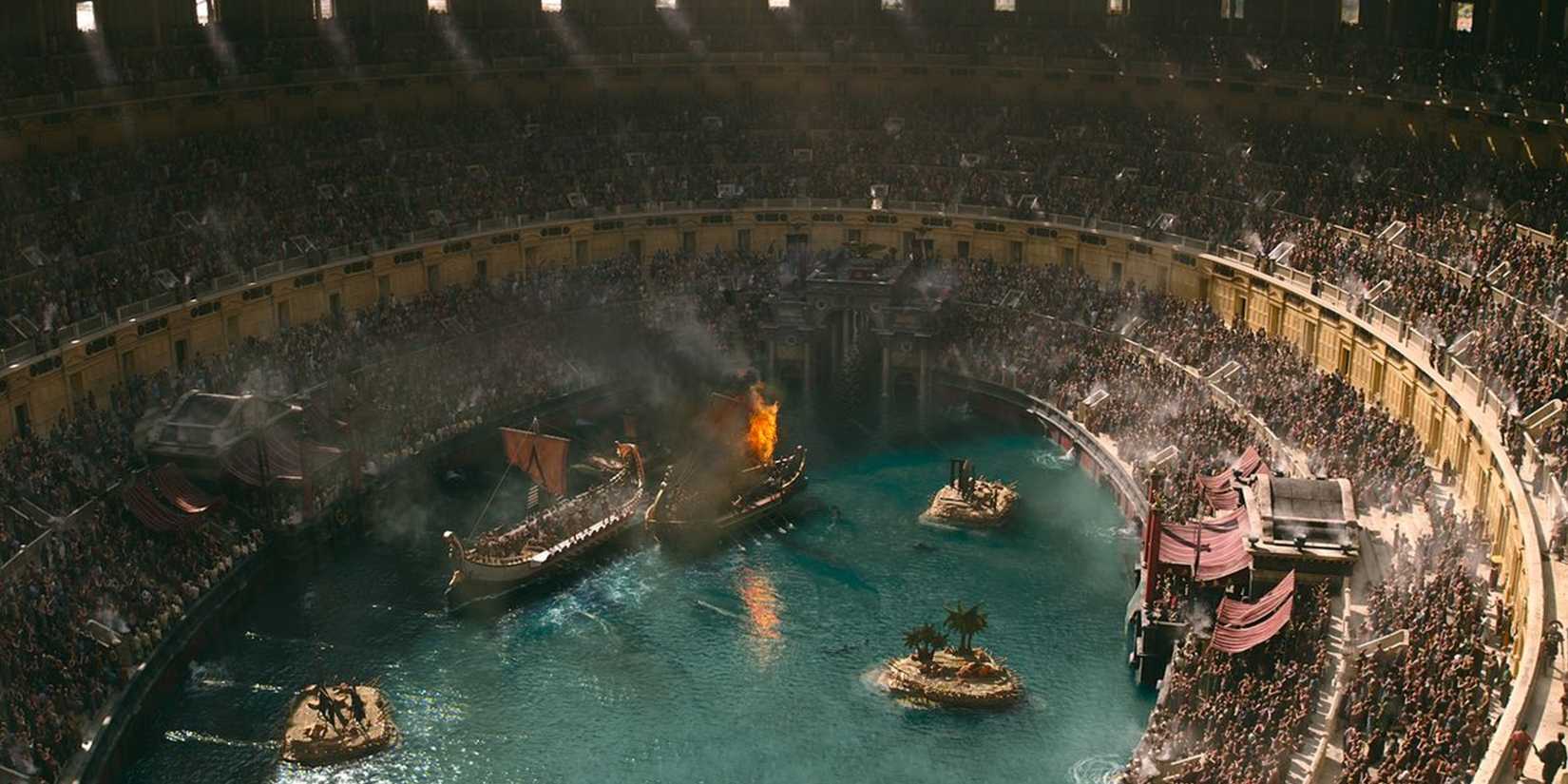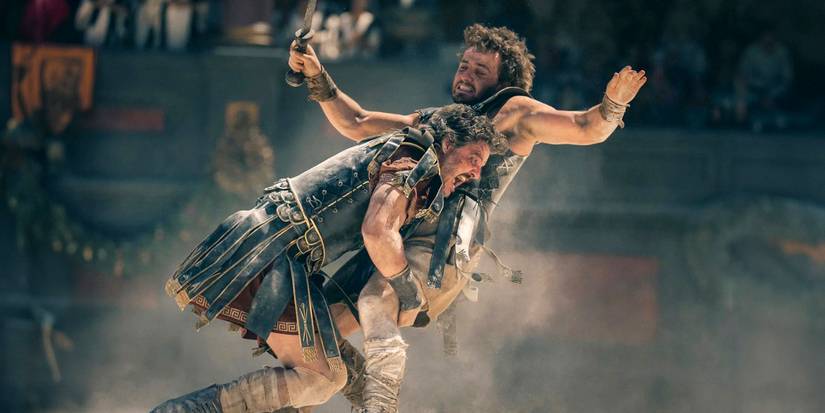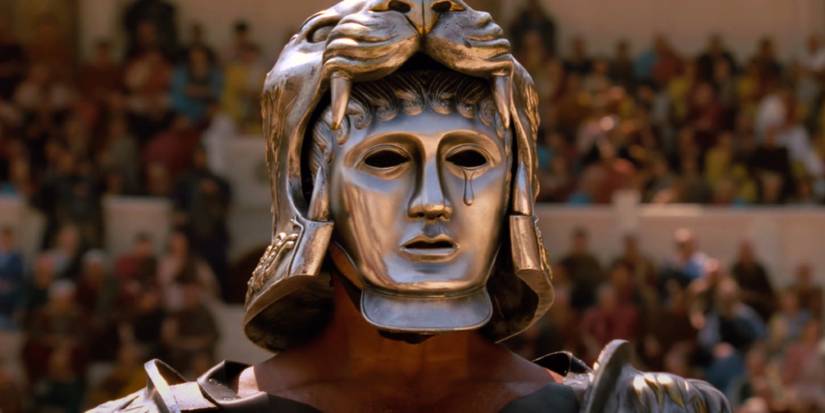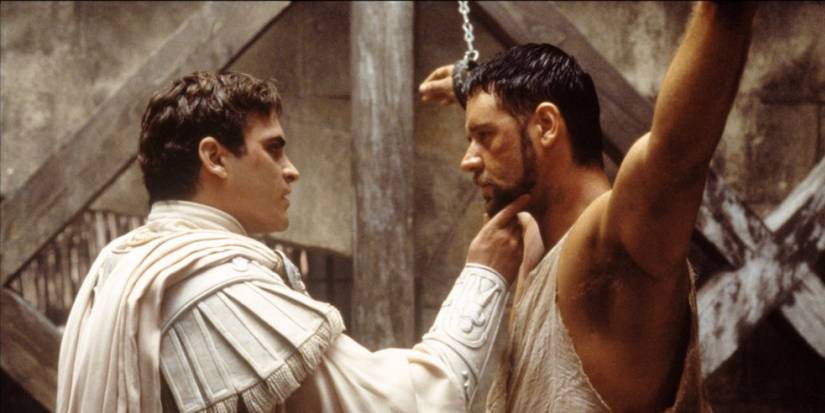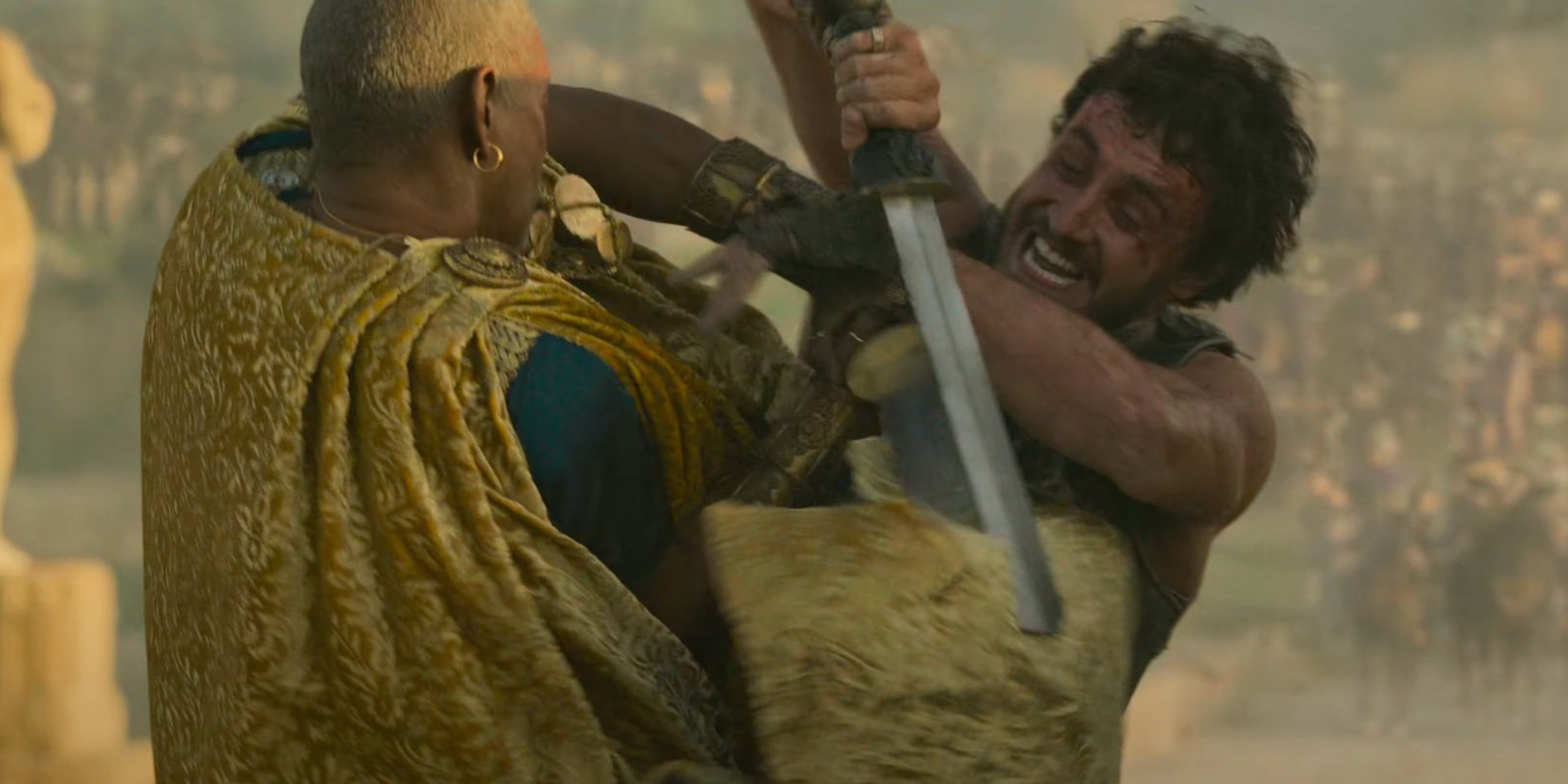Warning: this article contains spoilers for the Gladiator franchise.Ridley Scott’s Gladiator and Gladiator II contain some of the greatest battles and fight scenes that have been captured on film in the last quarter-century, treating audiences to massive set pieces on both land and sea in the midst of an epic multi-generational saga between Maximus and Lucius’ quests for revenge.
However, there’s no denying that the true stars of the franchise are the gladiator fights, pitting men against beasts like rhinos and baboons and formidable warriors of old in bloodied combat for the spectacle of thousands of onlookers. So, for all those people who have yet to experience their “Roman Empire” moment today, here are the greatest gladiator fights in Gladiator and Gladiator II.
Gladiators vs. Baboons
One of the more memorable fight scenes from Gladiator II is the baboon fight scene, which sees Lucius (Paul Mescal), Jugurtha (Peter Mensah), and other Numidian prisoners take on hordes of CGI violent, rampaging monkeys that tear through bone and feed upon the flesh of these potential gladiators with terrifying, blood-soaked precision.
After Jugurtha is killed by one of the baboons, Lucius then uses his shackles to hold off the jaws of one of the primates before viciously biting him and then choking him out with his chains, impressing Denzel Washington’s Macrinus character enough to be mentored by the power broker as a gladiator.
Chain Duo
One of the earliest fight scenes in Gladiator occurs after Maximus (Russel Crowe) is betrayed by Commodus (Joaquin Phoenix), captured by slave traders, and then purchased by Proximo (Oliver Reed) for use in the games in Zucchabar. Here, Maximus is paired with Juba (Djimon Hounsou), a Nubian hunter, against several armored gladiators wielding swords, nets, and flails.
Maximus and Juba’s binding makes this battle uncomfortably claustrophobic, as the two are forced to stay close and periodically hug one another’s backs while taking on multiple gladiators at once. The fight then climaxes with the pair overpowering a trident-wielding gladiator that dies after Maximus stabs him with his own weapon.
Indoor Duel
One of the more intimate fights in Gladiator II occurs when Lucius takes on Senator Thraex’s (Tim McInnerny) fighter in the presence of Emperors Geta (Joseph Quinn) and Caracalla (Fred Hechinger), with the latter giving the order of “No Quarter.” Although Lucius is initially hesitant to fight the gladiator, he eventually relents, even using his fists and a vase to overpower the man.
“No Quarter” is a military term that designates soldiers to not take prisoners and instead execute the captured.
After a minute of scuffling, Thraex’s fighter gets the advantage against Lucius after recovering his blade. However, Lucius is eventually able to retrieve the dagger, stabbing the gladiator in the chest. In a film dominated by massive CGI set pieces and battles, this fight is a well-needed break from the chaos that still demonstrates the cruelty of Rome’s leadership.
Rhino Duel
One of the biggest set pieces in Gladiator II occurs when Lucius and a team of gladiators take on an axe-wielding gladiator riding a rhinoceros in the Colosseum. Indeed, it’s one of the more fascinating spectacles in the entire Gladiator saga, and a breathtaking testament to the prowess of modern CGI artists.
In a bold stunt, Lucius puts down his blade, grabs two handfuls of sand from the arena’s floor, and tricks the rhino into charging into the walls of the Colosseum. With the rhino stuck, Lucius then takes on the opposing gladiator, who seemingly gets the upper hand until Lucius stabs him through the heart after refusing the mercy of the emperors.
Colosseum Naval Battle
Gladiator II’s spectacle reaches its pinnacle in the scene where the emperors flood the Colosseum’s floor to reenact the Roman naval battle with Persia. As Lucius leads his team of rowing gladiators, great white sharks swim amidst the battling ships, thirsty for the blood of the warring sailors.
After archers light their sails ablaze with fiery arrows, Lucius and his team of gladiators are forced to maneuver around the opposing vessel, overcoming their volleys after ramming the enemy ship into the side of the Colosseum. From there, Lucius and his gladiators board the wreck, viciously attacking their foes in one of the franchise’s most savage displays of violence.
Battle of Zama
Gladiator features its own battle reenactment when Maximus and his posse oppose a team of gladiators in a recreation of Carthage’s second fall that sees them cast as the barbarian hordes of Hannibal in Zama. Here, Maximus uses his past leadership to coordinate a battle plan against the rival gladiators, who are aptly labeled the “legions of Scipio Africanus.”
The second fall of Carthage occurred in 201 B.C.E., while Gladiator takes place 381 years later in 180 C.E.
These legions arrive in the arena by chariot in a cinematic nod to Ben Hur’s iconic chariot race from 1959. Though initially overcome by the chaos of the calvary and archers, Maximus organizes a response that cripples the legions’ chariots, leaving them vulnerable to attack and eventual defeat by the barbarian hordes.
Lucius vs. Acacius
One of the most anticipated fights in Gladiator II was Lucius’ duel with Acacius (Pedro Pascal), the general who ordered the death of his wife and is now married to his mother Lucilla (Connie Nielsen). After attempting to dethrone the emperors and free Lucius, Acacius is arrested, stripped of his honors, and thrust into the Colosseum to meet his fate.
Throughout Gladiator II, Lucius goes by the alias “Hanno.”
In a surprising twist, Acacius, after revealing he knows Lucius’ true identity, raises his right hand, signaling his surrender to the crowd. In response, Lucius spares the defeated General, who—with his last words—tells the grandson of Marcus Aurelius that he would’ve died for his father before being executed by the Praetorian Guard.
Maximus vs. Tigris of Gaul
Perhaps the most legendary Colosseum fight in Gladiator occurs when Maximus takes on Rome’s former champion and only undefeated gladiator, “Tigris of Gaul,” a formidable, muscular opponent donning a silver, masked helmet that bears a teardrop on its left eye. Tigris isn’t the only challenger in this duel, however, as Commodus has one more trick up his sleeve—real-life tigers.
Maximus remains on the backfoot for the majority of his fight with Tigris, fending off powerful blows while tigers prowl at his heels. However, once Maximus is able to disarm Tigris of his axe, he’s able to stab him with it in his foot, ending the fight. In an act of defiance against Commodus, Maximus also refuses to kill Tigris, setting up his eventual duel with the boy-king.
Maximus vs. Commodus
Perhaps the most satisfying duel in the entire Gladiator franchise comes when Maximus takes on Commodus one-on-one in the Colosseum at the climax of the film, in which the latter—being entirely devoid of any virtue or honor—stabs him in the side before concealing his wound, rigging the fight in his favor.
This isn’t enough to stop Maximus, however, who easily defeats Commodus even after being stabbed twice by the tyrant, drifting off into Elysium after securing Rome’s future as a Republic (that is, until that reality becomes a dream once more, ushering in the events of Gladiator II).
Lucius vs. Macrinus
Likewise, the most satisfying duel from Gladiator II arrives at the film’s climax when the armies of Acacius and Macrinus are poised to face off against one another on the outskirts of Rome before Lucius and Macrinus begin a duel fated to determine the future of the empire.
After Macrinus disarms Lucius, kicks hot coals in his eyes, and shoves him in the river, the battle appears finished as he repeatedly stabs the boy in the water. However, Lucius—bearing the armor of his father, Maximus—is unscathed, resurfacing to cut off Macrinus’ arm and kill him.
This story originally appeared on Screenrant


